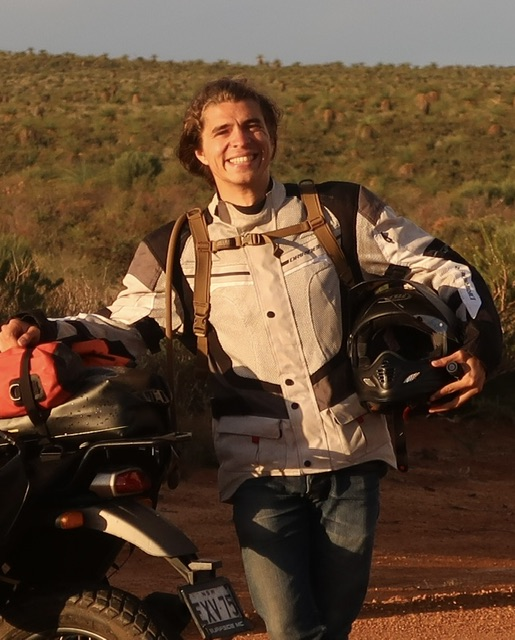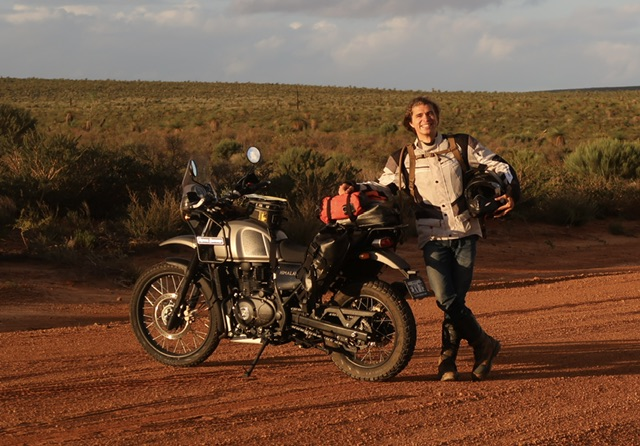Oliver Lowe
- 1 Post
- 47 Comments

 12·6 months ago
12·6 months agoAM radio paywall? Where?

 3·6 months ago
3·6 months agoI suppose there’s positive, then there’s “totally changed how I work”. It’s a big call. Maybe a real-world example would make it sound more believable: “before ChatGPT, I would have to sift through stacks of outdated VB6 documentation on $task. This took up most of the day. Yesterday I used a LLM to get a basic implementation of $task then I tidied it up and installed it within an hour.”

 13·8 months ago
13·8 months agoDevil’s advocate: what about the posts and comments I’ve made via Lemmy? They could be presented as files (like email). I could read, write and remove them. I could edit my comments with Microsoft Word or
ed. I could run some machine learning processing on all my comments in a Docker container using just a bind mount like you mentioned. I could back them up to Backblaze B2 or a USB drive with the same tools.But I can’t. They’re in a PostgreSQL database (which I can’t query), accessible via a HTTP API. I’ve actually written a Lemmy API client, then used that to make a read-only file system interface to Lemmy (https://pkg.go.dev/olowe.co/lemmy). Using that file system I’ve written an app to access Lemmy from a weird text editing environment I use (developed at least 30 years before Lemmy was even written!): https://lemmy.sdf.org/post/1035382
More ideas if you’re interested at https://upspin.io

 461·8 months ago
461·8 months agoThey even have a term for this — local-first software — and point to apps like Obsidian as proof that it can work.
This touches on something that I’ve been struggling to put into words. I feel like some of the ideas that led to the separation of files and applications to manipulate them have been forgotten.
There’s also a common misunderstanding that files only exist in blocks on physical devices. But files are more of an interface to data than an actual “thing”. I want to present my files - wherever they may be - to all sorts of different applications which let me interact with them in different ways.
Only some self-hosted software grants us this portability.
I wonder if their compositors would be laggy and bloated with features, too?

 2·9 months ago
2·9 months agoThis was the provider I went with after self-hosting my mail for 7+ years on an OpenBSD VPS. I feel like Migadu is an honest and good-value service.

 4·9 months ago
4·9 months agoEach time your browser makes a request (such as updating the graphs), it’s submitting a new DNS query each time.
That would be surprising; most HTTP clients reuse network connections and connections are deliberately kept open to reduce the overhead of reopening a connection (including latency in doing a DNS lookup).
Then again, I’ve seen worse ;)

 33·9 months ago
33·9 months agoWe can never know exactly. For me I always think about the (incidental) complexity of these huge apps like Instagram.
Somebody mentioned the phone overheating when watching Reels - those short videos. Here’s a made-up example (but I’ve written some software for video streaming services)…
Those videos are pretty short, and some people skip the clip even after less than 1 second. Instagram want that next video to be playing instantly (gotta get that dopamine hit ASAP!). A strategy you could take is have the app load the next, say, 5 possible videos in the background before you’ve even seen them. When the user swipes, that video is already playing. To make this even faster we could execute some recommendation decisions on-device rather than on some servers (over a relatively much slower 4G connection).
With all this complexity comes greater chance of some unexpected behaviour. Instead of loading 5 videos, maybe we accidentally load 100 and never clean up the old ones. Maybe after an OS update we need to change the way we mark a task as low priority.

 31·9 months ago
31·9 months agoCool insight - thanks! All points even more to bad planning by the Instagram team as you said originally.
I guess I wouldn’t be particularly surprised. Apple put shitloads of R&D into power-efficiency. Can’t imagine the culture at Instagram/Meta is like that.
Slightly off-topic: I’m not too familiar with FreeBSD (I use OpenBSD), but others may be interested to know you may be able to configure wireguard interfaces without installing any packages. It probably just involves running some
ifconfigcommands at boot via some entries in/etc/rc.conf. See https://docs.freebsd.org/en/books/handbook/network/
Yeah I’ve always found that
AllowedIPsname a little bit misleading. It is mentioned in the manpage:A comma-separated list of IP (v4 or v6) addresses with CIDR masks from which incoming traffic for this peer is allowed and to which outgoing traffic for this peer is directed.
But I think it’s a little funny how setting
AllowedIPsalso configures how packets are routed. I dunno.

 5·9 months ago
5·9 months agoYou could start troubleshooting by manually executing DNS queries from
mainDesktop.lan, and watching the DNS server logs. Not sure what OS the desktop is running, but assuming Windows you could run:nslookup -type=A pihole.example.duckdns.org.On macOS/Linux/etc.:
dig -t A pihole.example.duckdns.org.This could rule out behaviour from the proxy or applications.

 6·9 months ago
6·9 months agoI can imagine it’s a collection of bugs where it’s sorta the OS’ problem but sorta the application’s problem. It probably reached a stalemate. Nobody really wanted to spend the extra engineering effort; maybe it would all have to be undone then rewritten again to get something out in time.

 4·11 months ago
4·11 months agoHere’s a slightly different story: I run OpenBSD on 2 bare-metal machines in 2 different physical locations. I used k8s at work for a bit until I steered my career more towards programming. Having k8s knowledge handy doesn’t really help me so much now.
On OpenBSD there is no Kubernetes. Because I’ve got just two hosts, I’ve managed them with plain SSH and the default init system for 5+ years without any problems.

 3·11 months ago
3·11 months agoInstead they’re bitching about investments in science.
Agreed. To be fair, I can also see where the frustration comes from. We see “deals with the devil” being made, but the (disappointing?) reality is tech progress often looks like that. Flashy stories with pie-in-the-sky ideas get headlines and funding. Meanwhile the boring, difficult work continues on in the background. From the outside it seems non-sensical and inefficient: why couldn’t they just invest money directly into GPS research without all the military stuff? But, fortunately, some amazing stuff does come out of it too.

 1·11 months ago
1·11 months agoThis is a tricky one. Are the developers themselves responsible or also managers and leadership? I don’t have an answer to this.

 5·11 months ago
5·11 months agoI wonder what the UN’s track-record is with cybercrime and surveillance historically. Anyone have any links to share?

 192·11 months ago
192·11 months agoI see where you’re coming from. Battery electric vehicles I think are a good example of trickle-down. It seems the R&D for electric cars affordable to wealthy people leads to new infra and tech for a changing power grid, buses, trains and bicycles.
But two examples you raised:
- corrective lenses
- refrigeration
have clear quality-of-life and health benefits. Supersonic passenger flights feel more like a luxury and convenience compared to food preservation.
Hopefully in the development of reduced flight times between other sides of the world we perform research with impact beyond flight. Things like improved materials, fuel, aerodynamics that could be used for trains and trucks. I’m not an engineer but I hope it works like that!


Good question! Sorry if this answer is weird :)
For me, I don’t actually interact from Mastodon per se. I wrote a couple of read-only Lemmy & Mastodon clients. One for a weird text editing environment I use (https://lemmy.sdf.org/post/1035382) and via email (https://gts.olowe.co/@o/statuses/01HMQ9N4HQ2ETGZWJS49K5NG5Y). To reply to or create posts, I use a write-only Mastodon client I wrote.
My idea is to exercise the fediverse. In principal I don’t think I should need separate accounts for Lemmy, PeerTube, Mastodon, Kbin, Akkoma, etc.
Right now I’m replying from an account on lemmy.sdf.org as I can’t reply from GoToSocial (Lemmy and GoToSocial don’t work well together right now) and my Mastodon server (hachyderm.io) has a post limit of 500 characters.